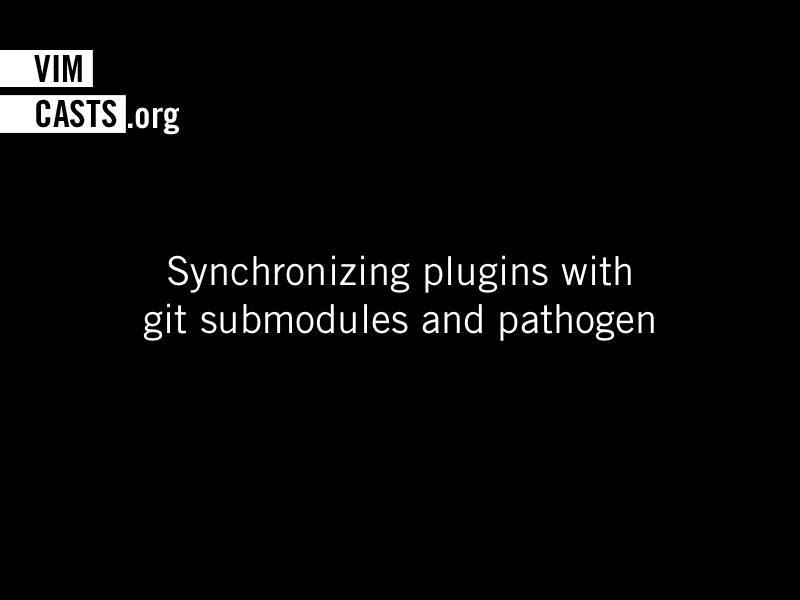
- INSTALLING VIM PLUGINS WITH PATHOGEN HOW TO
- INSTALLING VIM PLUGINS WITH PATHOGEN INSTALL
- INSTALLING VIM PLUGINS WITH PATHOGEN UPDATE
Unzip delimitMate-master.zip in ~/.vim/bundle/delimitMate-master/. ~/.vim/bundle/delimitMate-master/plugin/. Once it is installed in ~/.vim/bundle/, you should get: ~/.vim/bundle/delimitMate-master/autoload/.
INSTALLING VIM PLUGINS WITH PATHOGEN INSTALL
If you don’t have those lines, well… add them! What good is Vim without syntax highlighting and filetype detection? Install a plugin

The two last lines have nothing to do with pathogen but, if you have them in your ~/.vimrc, be sure to put them after the pathogen line. Put these lines at the top of your vimrc: execute pathogen#infect()

If they don’t exist already, create these two directories: ~/.vim/autoload/ Place your script in ~/.vim/bundle/baz/syntax/baz.vim. Is it a generic plugin? A filetype plugin? A syntax script? Let us assume it is a syntax script.Ĭome up with a descriptive name for that single-file plugin, say baz. That mechanism also applies to single-file scripts but they require a bit more work.
INSTALLING VIM PLUGINS WITH PATHOGEN UPDATE
Now, our plugins are easy to delete, update or modify because they are carefully segregated from each other. With the help of Pathogen, we maintain the standard structure but we move it under ~/.vim/bundle//: ~/.vim/bundle/bar/plugin/bar.vim With the standard installation method we should have this mess: ~/.vim/doc/bar.txt Let us take two simple, imaginary, plugins called foo and bar as an example. This is not the place to explain the technicalities behind Pathogen but the basic concept is quite straightforward: each plugin lives in its own directory under ~/.vim/bundle/, where each directory simulates the standard structure of your ~/.vim/ directory. That design can lead to a messy config where it quickly becomes hard to manage your plugins. Syntax scripts go into ~/.vim/syntax/, plugin scripts go into ~/.vim/plugin, documentation goes into ~/.vim/doc/ and so on. Vim plugins can be single scripts or collections of specialized scripts that you are supposed to put in “standard” locations under your ~/.vim/ directory. For Windows, replace ~/.vim/ with $HOME\vimfiles\ and forward slashes with backward slashes. Step 3: Add plugins to install in ~/.vimrc fileĪdd the name and location of each plugin to be installed between the plug#begin and plug#end() lines.I’ll assume you are on Linux or Mac OSX. Step 2: Create ~/.vimrc file $ touch ~/.vimrc file Step 1: Install the vim-plug $ curl -fLo ~/.vim/autoload/plug.vim -create-dirs

INSTALLING VIM PLUGINS WITH PATHOGEN HOW TO
Let's check how to install vim plugins using vim-plug. Popular plugin managers are Vim-plug, Vundle, Pathogen, dein.vim, and VAM. Plugin manager has features such as updating, disabling plugins make it easy to manage vim plugins. Plugin Managers is still useful because of its features. $ git clone -depth 1 ~/.vim/pack/my-plugins/start/Airline/ Install Vim plugin using a plugin manager $ git clone -depth 1 ~/.vim/pack/my-plugins/start/NERDTree/ $ mkdir -p ~/.vim/pack/my-plugins/start/Airline/ $ mkdir -p ~/.vim/pack/my-plugins/start/NERDTree/ The package added in opt can be loaded to memory by: :packadd packagenameįor example, let's install two Vim plugins - NERDTree and Vim Airline. If you don't want the Vim plugin to start automatically at the start, create a subfolder opt under the plugin directory ( here ' my-plugins') and add package there.

Create the directory to store Vim plugins: $ mkdir -p ~/.vim/pack/my-plugins/start


 0 kommentar(er)
0 kommentar(er)
